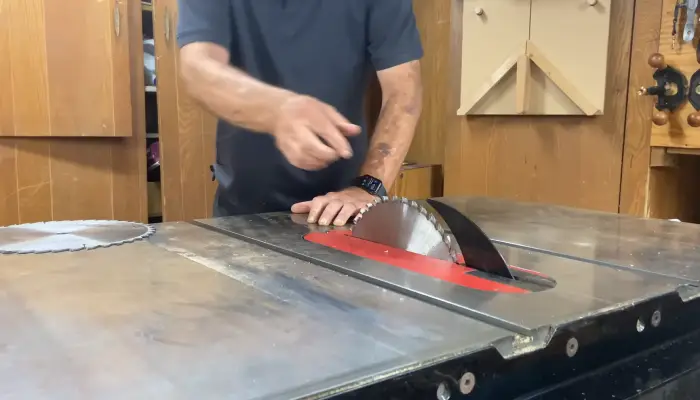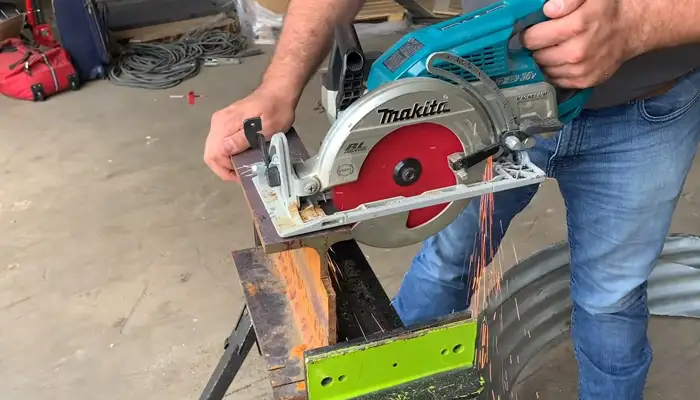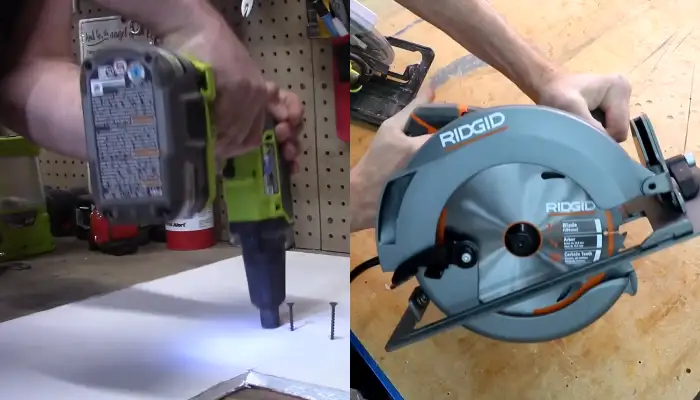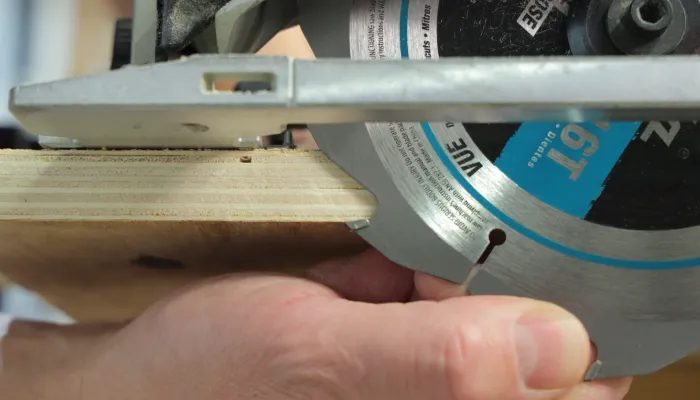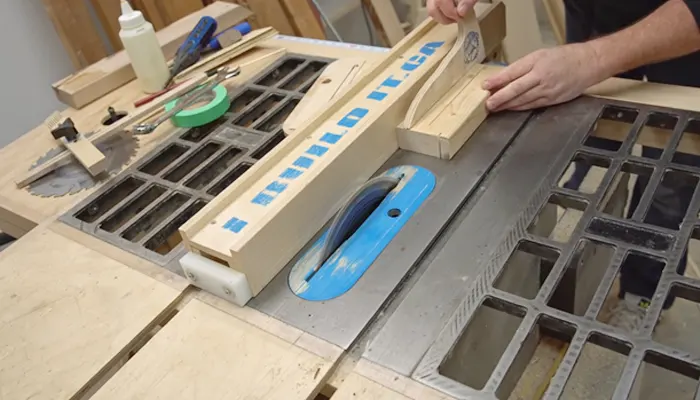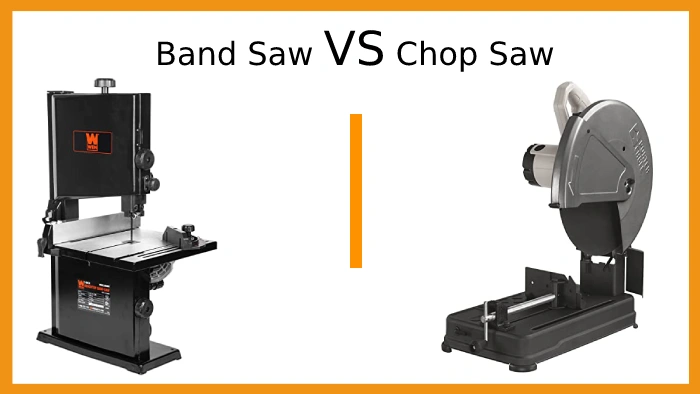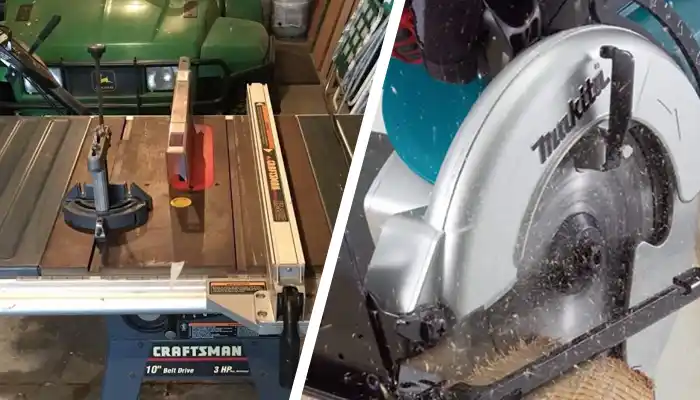Are Table Saw Blades Reverse Threaded: Behind the Reasons
Table saw blades play a pivotal role in the world of woodworking, enabling precise and efficient cuts in various materials. However, not all table saw blades are created equal, and one critical distinction is whether they are reverse threaded or not.
The truth is that table saw blades have reverse threads. Yes, it might seem counterintuitive, but there are some good reasons for it. The reverse threading improves blade stability, reducing vibration and enhancing the overall cutting performance.
Here, I’ll explain why table saw blades are reverse-threaded and answer common questions. I will discuss whether you can convert a non-reverse-threaded blade and how to change a reverse-threaded blade.
Why Are Table Saw Blades Reverse Threaded: 6 Positive Reasons
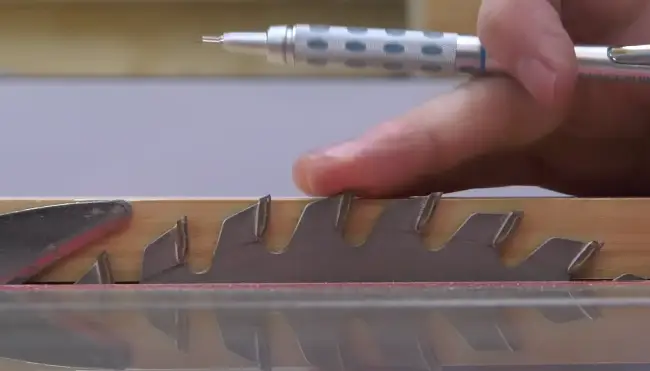
The reverse threading of table saw blades is due to several reasons. Here I listed the top reasons:
- Preventing self-loosening
- Improved blade stability
- Proper installation
- Anti-kickback mechanism
- Efficient cutting
- Compatibility with common designs
No 1: Preventing Self-Loosening
To prevent self-loosening, I found that the reverse threading of table saw blades ensures a secure and stable blade position during operation. When the blade rotates counterclockwise, the reverse thread design causes the arbor nut to tighten as the saw cuts through the material.
This is crucial for maintaining the integrity of the blade’s position and preventing any unwanted movement or wobbling during use. The reverse threading mechanism works by having the arbor nut turn in the opposite direction of the blade’s rotation, preventing the nut from loosening naturally due to centrifugal force.
No 2: Improved Blade Stability
I frequently find that the reverse threading of table saw blades significantly improves blade stability during operation. This improvement in stability is crucial because the rotational forces generated by cutting into materials can lead to vibrations and torque that could loosen the blade.
Without reverse threading, this detachment can occur gradually, increasing the risk of accidents. However, with reverse threading, the blade is designed to resist unscrewing due to these forces.
The opposite direction of the threads acts as a counterforce, preventing the blade from losing traction and maintaining its stability throughout the cutting process.
No 3: Proper Installation
The installation of table saw blades properly is crucial for safety. Using reverse-threaded blades helps align the threads precisely with the arbor, reducing the risk of misalignment. This alignment is essential for maintaining stability and preventing accidents during operation.
Because the arbor and blade are reverse threaded, they must be secured using the proper torque. This helps maintain stability and prevents the arbor from coming loose during operation.
Additionally, reverse threading makes it easier for users to tighten the blade correctly, as it requires the blade to rotate in the same direction as the blade.
No 4: Anti-Kickback Mechanism
Using a reverse-threaded enhances the safety of table saws by aligning with the anti-kickback mechanisms present in the machine. The anti-kickback mechanism is designed to prevent the workpiece from being forcefully thrown back toward the operator, reducing the risk of injury.
As I know, when the blade is spinning forward, the reverse-threaded teeth engage with the workpiece, pushing it down and into the table, minimizing the chances of kickback. This mechanism works with other safety features, such as riving knives and splitters, to ensure a safer cutting experience.
No 5: Efficient Cutting
To achieve more efficient cutting with a table saw, the blades are equipped with reverse-threaded teeth. This design feature allows the teeth to cut into materials more effectively, resulting in cleaner and more precise cuts.
The reverse-threaded teeth pull the workpiece into the saw during the cutting process, reducing the need for excessive force or pressure. This not only improves the overall performance of the table saw but also enhances safety by minimizing the risk of kickback.
According to my knowledge, the reverse-threaded teeth create a pulling motion, which helps to prevent the workpiece from being pushed back toward the operator. This is particularly important when cutting larger or heavier materials that can be more difficult to control.
No 6: Compatibility with Common Designs
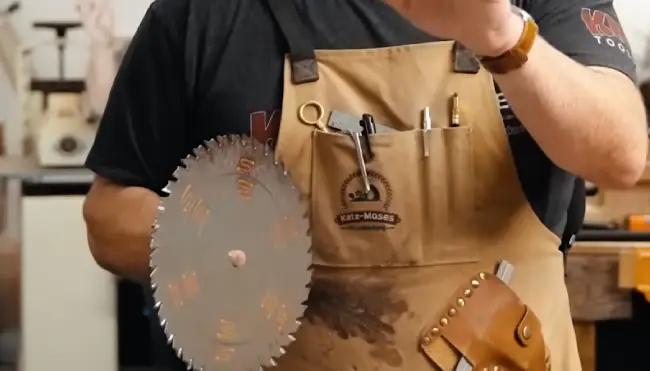
The reverse-threaded design of table saw blades is specifically engineered to be compatible with common table saw designs. With the table saw safety guard and riving knife configuration, reverse-threaded blades provide optimal performance and safety.
I found that most table saws on the market feature a right-tilt design, where the blade tilts towards the right side of the saw. In these saws, the blade spins in a clockwise direction.
Therefore, the compatibility of reverse-threaded blades with common table saw designs is crucial for optimal functioning and user safety.
Can I convert a non-reverse-threaded blade into a reverse-threaded one?
Changing a non-reverse-threaded blade to a reverse-threaded one isn’t recommended due to safety concerns and potential warranty avoidance. Altering the threading on a blade can compromise its structural integrity and performance, leading to unpredictable and hazardous outcomes.
Manufacturers design table saw blades with specific threading to ensure optimal functionality and safety. Attempting to convert a blade from non-reverse-threaded to reverse-threaded may result in improper alignment, causing the blade to loosen or detach during operation. I believe this can lead to serious accidents and injuries.
Do I need a special tool to change a reverse-threaded blade?
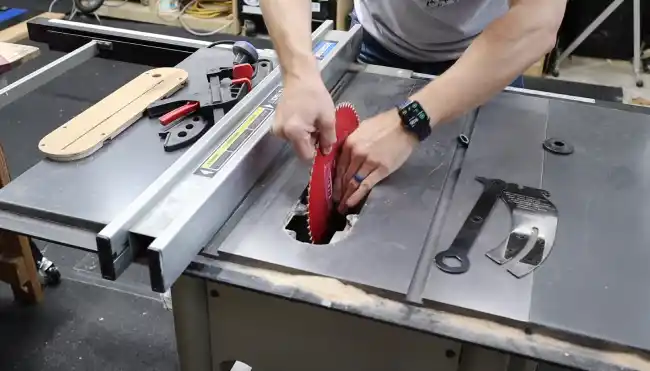
Changing a reverse-threaded blade typically requires the same tools as a standard-threaded blade, such as an arbor wrench. This wrench typically has a handle marked with an arrow indicating the direction of rotation for loosening the blade.
Additionally, the wrench may have a different shape or size to ensure a secure grip on the reverse-threaded blade. I recommend using the correct tool when changing a reverse-threaded blade to avoid damaging the blade or the table saw.
Reverse-Threaded Table Saw Blades: Enhance Safety with Stability
Now you know the table saw blades are reverse threaded for some reason that I outlined above. In the realm of woodworking, every detail matters, and the reverse threading of table saw blades is no exception. This seemingly small design feature enhances safety, stability, and efficiency in the workshop.
By preventing self-loosening, providing operational stability, and ensuring proper installation, reverse-threaded blades have become a standard choice for many woodworking enthusiasts.
Keep in mind that converting a non-reverse-threaded blade to a reverse-threaded one is not recommended. However, changing a reverse-threaded blade doesn’t require a special tool, just a basic understanding of how to remove and replace the blade safely.

